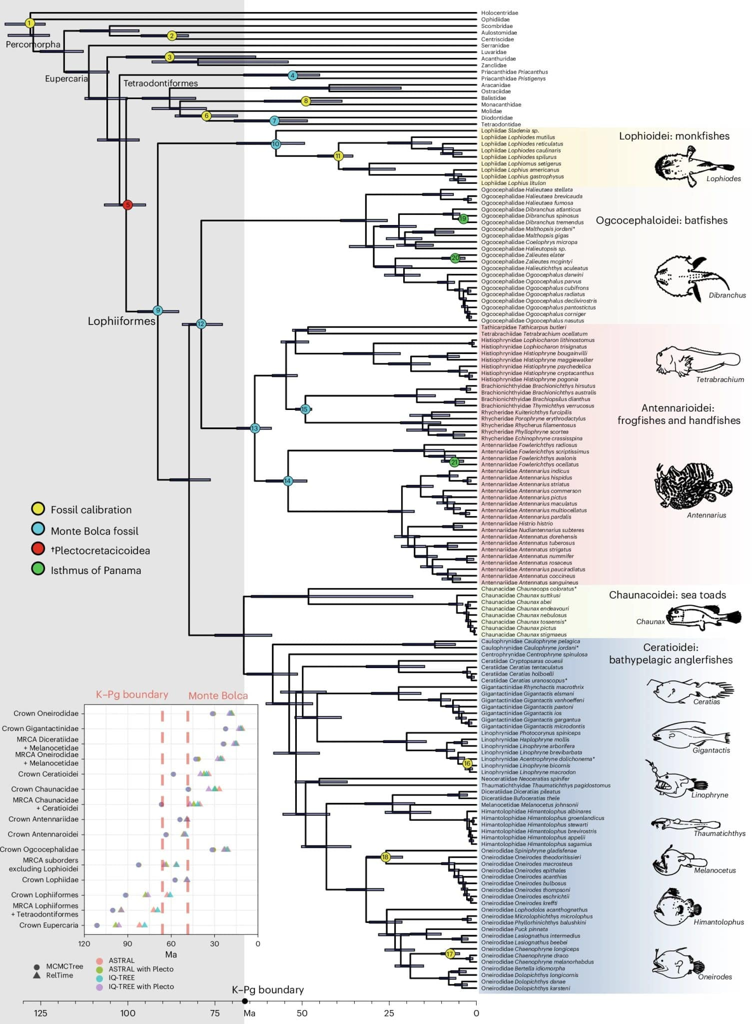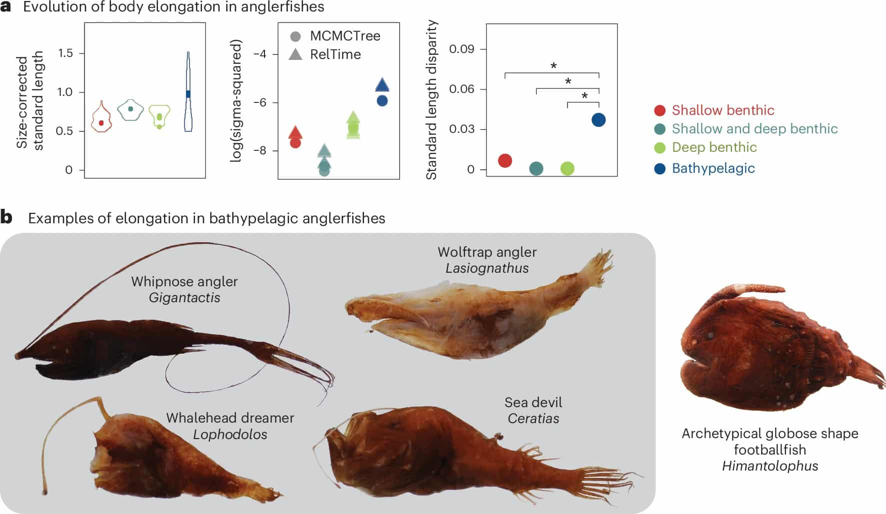The ancestor of sea devils has been identified as a creature from the ocean floor.
A new habitat for living organisms primarily offers new ecological opportunities. A species that settles in an unfamiliar area can quickly distribute itself across various niches, diversify, and establish a long-term presence. This is what happened, for instance, with cichlids.
In a recent study, biologists discovered a "curiosity gene" in these fish. This gene has allowed cichlids to successfully colonize Lake Tanganyika in Africa, which is the third largest lake in the world by volume. It's worth noting that there are about 250 species of them there.
However, not every environment is so comfortable and free. The ocean at depths exceeding a kilometer, where the bathypelagic zone begins, is a rather harsh place. There is no sunlight, it's cold — water temperatures do not exceed 4°C, and the pressure reaches hundreds of atmospheres, with almost nothing to eat.
In such unfriendly conditions live anglerfish, also known as Lophiiformes. There are over 350 species of them, and four out of five suborders inhabit the ocean floor. The only suborder — deep-sea anglerfish (Ceratioidei) — lives in the depths of the World Ocean, at depths of up to three kilometers.

Anglerfish are distinguished from other ocean inhabitants by their characteristic "fishing rod" with a glowing lure and pronounced sexual dimorphism: males literally parasitize females. It is noteworthy that through the process of evolution, these fish have developed various body shapes: spherical, flat, elongated, and entirely unique ones, like those of caulophrynids.
Several hypotheses exist to explain this diversity — it remains unclear how anglerfish colonized the deep-sea environment. Was it a barrier or a stimulus? What was the lifestyle of their ancestor like? An international group of biologists sought answers. They conducted the largest phylogenetic analysis of anglerfish and identified a probable ancestor of these fish, as well as unveiled details of their evolutionary development. The results were published in the journal Nature Ecology & Evolution.
The sample consisted of 132 species of anglerfish (37.8% of the entire diversity of the order) — genomic data covered 20 out of 21 families of these fish. In addition to 152 modern specimens from which the scientists extracted DNA, they relied on key fossil taxa and calibrated the phylogenetic tree using geological markers. In total, the authors constructed eight evolutionary trees.

Six of these indicated that anglerfish originated 92-61 million years ago, during the Cretaceous period (145-66 million years ago). The most intriguing group of deep-sea anglerfish separated, according to various interpretations, either in the Paleocene, about 58 million years ago, or in the late Eocene — 40-34 million years ago. This range, as the scientists emphasized, suggests that the transition to a deep-sea environment was not linked to geological processes.
The most likely ancestor of these anglerfish lived on the ocean floor at various depths. This contradicts the hypothesis that deep-sea species migrated to the bathypelagic zone from shallow waters. Apparently, it was the other way around: they ascended from the benthic zone.
Moreover, the averaged model of all reconstructions helped reveal that adapting to a new environment led to the search for new and unusual structures: anglerfish developed larger jaws, smaller eyes, a compressed body, and the shape of the skull changed dramatically, with some species having enormous heads.
“The idea that a resource-poor homogeneous environment — for example, surrounded entirely by water — can lead to diversity in body and skull forms is indeed counterintuitive in this area. When fish have to interact with various objects, such as corals and plants in shallow waters, sand and stones on the ocean floor, we would expect to see a great diversity of forms from them. Instead, we observe it in deep-sea species, which have nothing to interact with except for water,” remarked Rosa Foche, co-author of the article and a researcher at the Department of Biological Sciences at Rice University (Houston, Texas, USA).